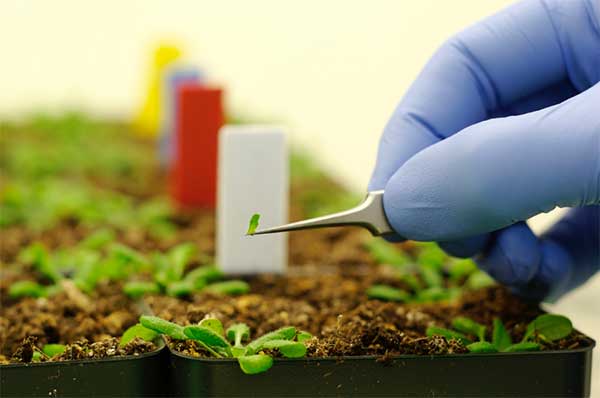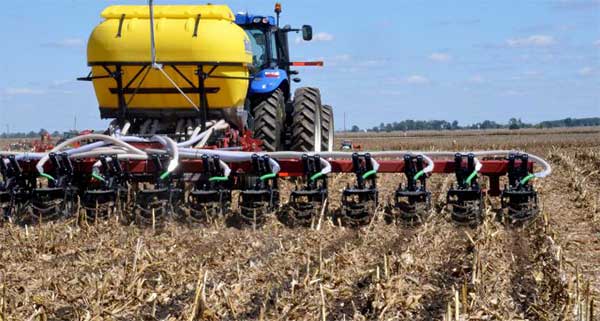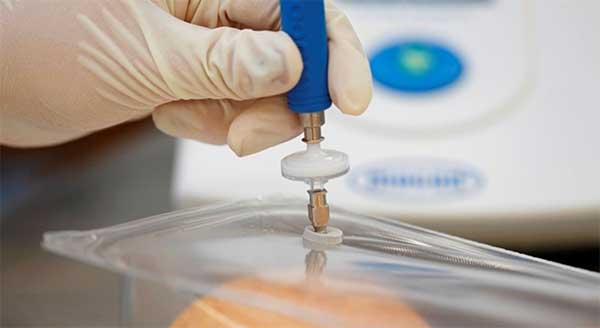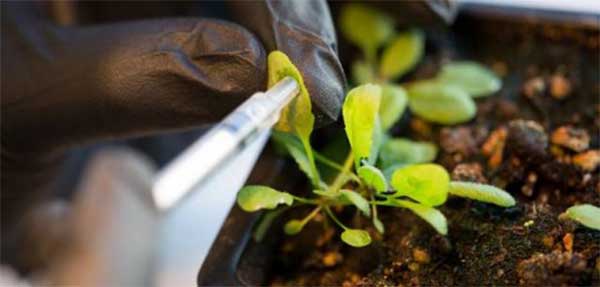Introduction
Nanotechnology is basically defined as the engineering of functional systems at the nanoscale, which is about 1-100 nanometers. Interestingly, one nanometer is a billionth of a meter or 10-9 of a meter. In other words, it refers to the process of building items from the bottom up with atomic precision so as to avail benefits like the lighter weight, higher strength, and greater chemical reactivity. Today this technology is being used on a large scale.
Most of the consumer products make use of nanotechnology which is not known to most of us. Right from the light-weight cell phone screens to light car bumpers and radiation resistant sunscreen to stain repellant clothes, everything contains the nanotech effect. Even the wearable devices play a significant role in exploring the potential of nanotechnology to a considerable extent.

You may also like: Nanotechnology in Detail
Applications of Nanotechnology in Agriculture
Apart from these fields, the impact of nanotechnology can be easily seen in the food and agriculture industry; whether it’s about reducing the adverse effects of agricultural practices on the environment, ensuring food security, or developing nanotech-based tools and equipment for improving productivity.
Let’s take a look at the various ways in which nanotechnology is playing a beneficial role in agriculture.
1. Sustainable Intensification in Agriculture
Sustainable Intensification refers to the concept of increasing the yield without adversely affecting the environment. The approach is to select a combination of practices while keeping in mind the biophysical, social, economic and cultural situation. For this purpose, novel nanomaterials have been developed for increasing the productivity using substances like inorganic, lipid, and polymeric nanoparticles.
These can be utilised in the intelligent nanosystems designed for the immobilization of nutrients and releasing them into the soil. Moreover, it could also help in reducing eutrophication by bringing down the amount of nitrogen transfer to groundwater.
2. Aid in Precision Farming
The idea of precision farming focuses on minimizing the use of pesticides yet ensuring maximum crop productivity. Under this, remote sensing devices, computers, and GPS systems can be used to analyse the environment and identify problems associated with crops and their growing environment. The utilization of nanosensors along with GPS-enabled smart devices will help farmers to gain accurate information thereby assisting in making correct decisions regarding plant growth and soil suitability.

3. Improving the Quality of Soil
It has been reported that hydrogels, nano-clays, and nano zeolites enhance the water holding capacity of the soil and allow a slow release of water. This, in turn, reduces the hydric shortage, particularly during the crop season. Such practices are also helpful in the reforestation of degraded areas that have lost their soil fertility.
Besides, organic materials like polymer and carbon nanotubes as well as inorganic elements like nano metals and metal oxides can be used to absorb the contaminants thereby improving the soil remediation capacity and reducing the time and cost involved.
4.Stimulation of Plant Growth
The carbon nanotubes and nanoparticles of silver, zinc oxide, etc can be really helpful in remediating the plant growth by ensuring that the nutrients are utilised optimally by the plants. However, the chances of success depend on a lot of factors like the susceptibility of plants species and other parameters including the concentration, composition, size and chemical properties of nanomaterials.
Further, it’s crucial to understand the interaction between the plants and nanomaterials so as to identify how much impact is being created in the procedure. For this purpose, new protocols can be developed and different analytical techniques like microscopy, magnetic resonance imaging, and fluorescence spectroscopy can be used.
5. Powerful Monitoring Tools
As compared to the analytical and biosensors, nanosensors represent a powerful tool with improved features. These are defined as analytical devices with at least one dimension not greater than 100 nm designed for monitoring the physio-chemical properties in places which are difficult to reach. Nanotubes, nanowires, nanoparticles, and nanocrystals are used to optimize the signal transduction derived by sensing elements in response to exposure to biological and chemical analytes of similar size.
6. Managing Food Supply Chain
Nanosensors can also contribute in managing different phases of food supply chain including crop cultivation, harvesting, food processing, transportation, packaging, and distribution. These are used as devices to measure soil parameters to detect pathogens or to predict the intake of nitrogen so as to foster a sustainable farming practice. Besides, these can be developed to monitor and tune the volume of insecticides in the crops.

7. Automation of irrigation system
For smart agricultural practices, particularly in areas with water scarcity, the automation of irrigation system plays a crucial role. Sensor technology has the ability to maximize the efficiency of water usage to a great extent. These can estimate soil water tension in real-time while being mated to autonomous irrigation controllers. Such features lead to a sustainable irrigation involving evaluation of climate and crop growth aspects, which is otherwise quite difficult to accomplish.
8. Smart Packaging to Ensure Food Safety
Smart packaging is important to monitor the freshness of food items during the packing, transport, storage and display at the marketplace. This would help in increasing the shelf-life of food products by introducing anti-fungal and anti-microbial surfaces, improving heat-resistance properties, detecting biochemical changes and altering the permeation behaviour of foils. Nanosensors can act as monitoring systems to -:
• measure the physical parameters like humidity, pH level, and temperature
• reveal the gas mixtures
• detect pathogens
9. Detecting Plant-Related Health Issues
Owing to the extreme harms caused by pesticides like DDT, there is a growing concern and awareness regarding the protection of the environment. As a result, the industry is focusing on developing integrated pest management system reflecting a combination of the smart and targeted use of chemicals with granular monitoring of plant health. Such systems can efficiently utilise nanotech-enabled devices which act as a preventive and early warning system so as to identify the health issues and offer remedial measures.

Related Story: Boosting Battery Storage by 50% with Nanotechnology
Conclusion
Although various applications of nanotechnology in agriculture have been advocated and explored, there are a lot of issues to be resolved before its actual implementation at a full-fledged scale. There is a need to design processes which are easily up-scalable at the industrial level. Besides, the exploitation of nano-pesticides is important to predict the behaviour of nanoparticles in the environment. It is also believed that the challenges posed by ever-growing population and climate change can be met by introducing nanomaterials in agriculture.
There are so many ways in which nanotech can be beneficial including practices like efficient use of pesticides, management of resources, diffusion of precision agriculture, and reduction of waste. However, before that takes place, the cost, risk, and benefits have to be evaluated. Besides, it’s also essential to assess the impact of nanotechnology on the environment as well as on human health.
Filed Under: ARM., PIC Microcontroller., Tech Articles


Questions related to this article?
👉Ask and discuss on EDAboard.com and Electro-Tech-Online.com forums.
Tell Us What You Think!!
You must be logged in to post a comment.